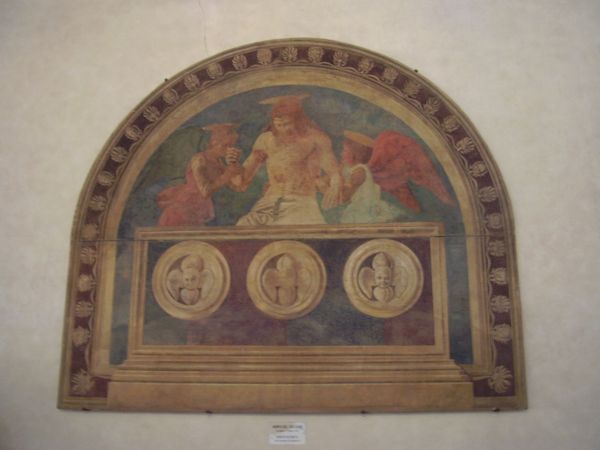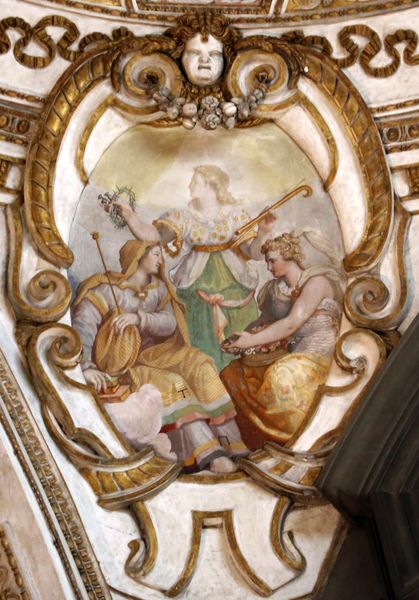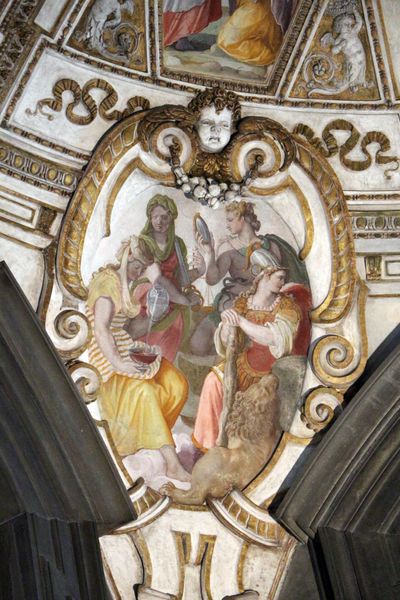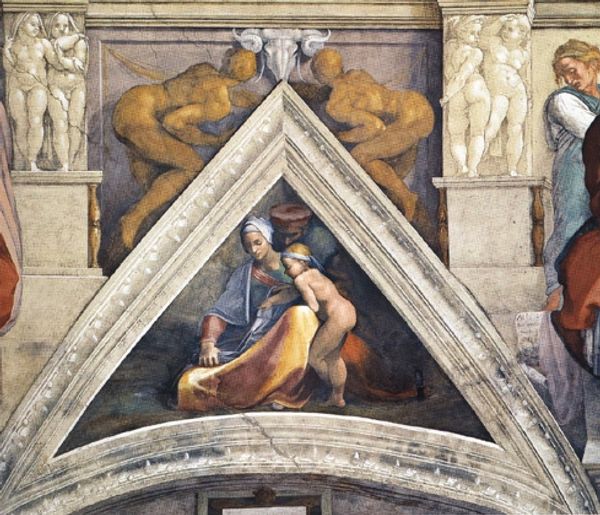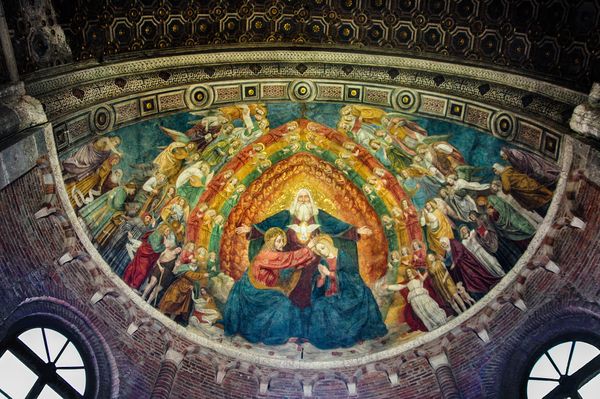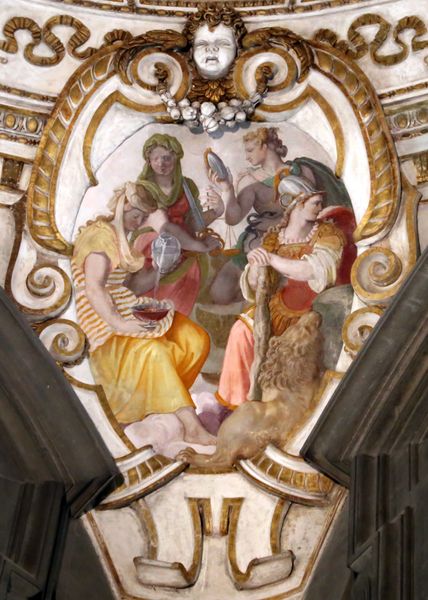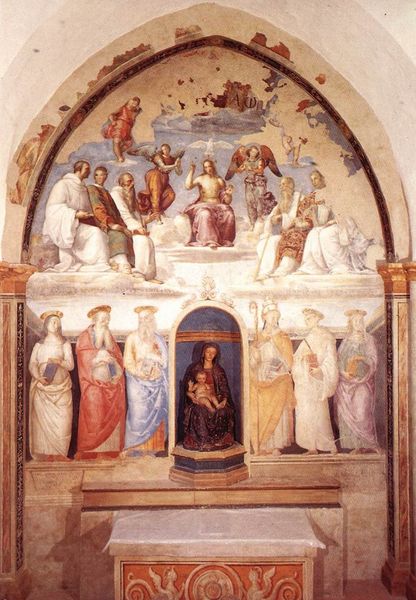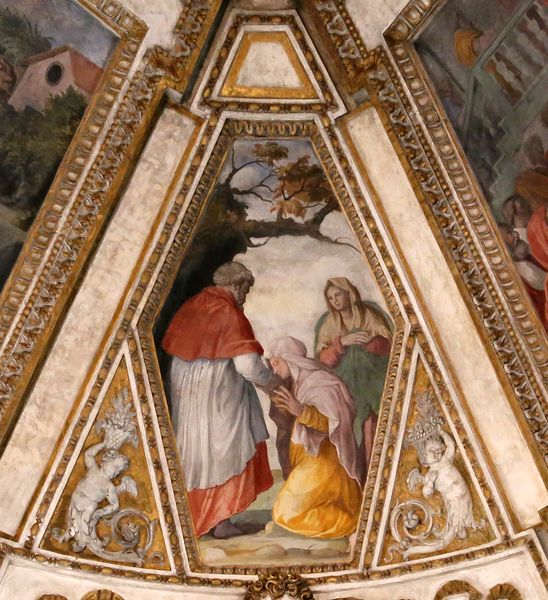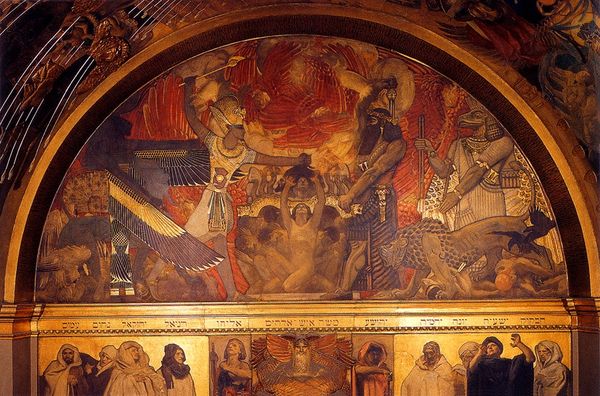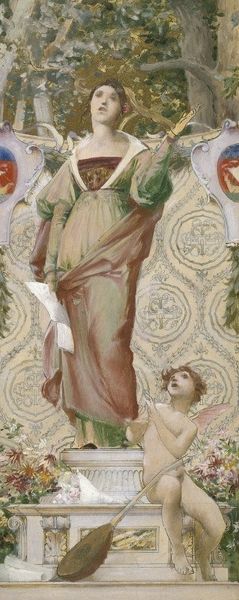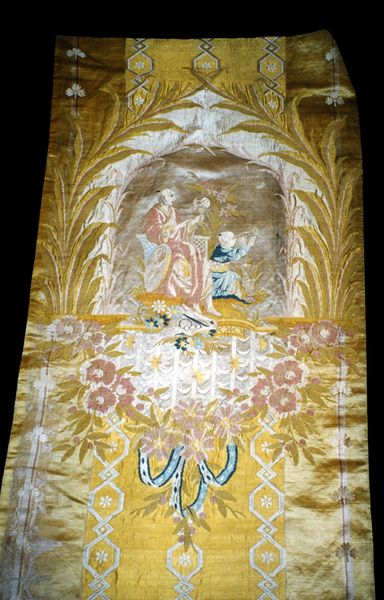
painting, mural
#
allegory
#
painting
#
sculpture
#
classical-realism
#
historic architecture
#
traditional architecture
#
19th century
#
history-painting
#
academic-art
#
mural
#
historical building
#
statue
Copyright: Public domain
Editor: So, this is John Singer Sargent's "The Sphinx and the Chimera," a mural from 1921. There's something really unsettling about the contrast between the serene face of the Sphinx and the chaotic figure of the Chimera lunging at it. What do you make of their relationship? Curator: Unsettling is a good word for it. I wonder, though, if that chaos isn’t just a matter of perspective. I see Sargent grappling with ideas – eternity staring down the face of… well, of monstrosity, sure, but also of potential. Imagine that quiet Sphinx is just trying to make sense of its own shadow. Are we so different? Editor: That’s… unexpected. I was so focused on the looming Chimera that I missed the Sphinx's perspective. But why those specific figures, the Sphinx and Chimera? Why not some other monsters? Curator: Sargent's clever, isn't he? The Sphinx represents enigma, antiquity, something immovable. And the Chimera? That’s pure invention, a fever dream made flesh – or plaster, in this case. Think about it in terms of artistic impulse. He's pitting established form against the raw power of imagination, a kind of "what if?" on an epic scale. Maybe that’s why the figures in the margins have human bodies and bird wings: He wants us to recognize what our constraints are, but imagine the ability to leap from one idea to the next. I think it also reflects how classical artistic forms had always contained the germ of future art styles within. Do you feel that way too? Editor: I never considered that! The artistic impulse, struggling against the established… I love that interpretation. Curator: I like to think so, anyway! Each time I ponder this artwork, it takes on new meaning to me! Editor: Exactly. I thought of it more in terms of a conflict between reason and fantasy, but your point of view helps make the artwork come alive in fresh, new ways!
Comments
No comments
Be the first to comment and join the conversation on the ultimate creative platform.


